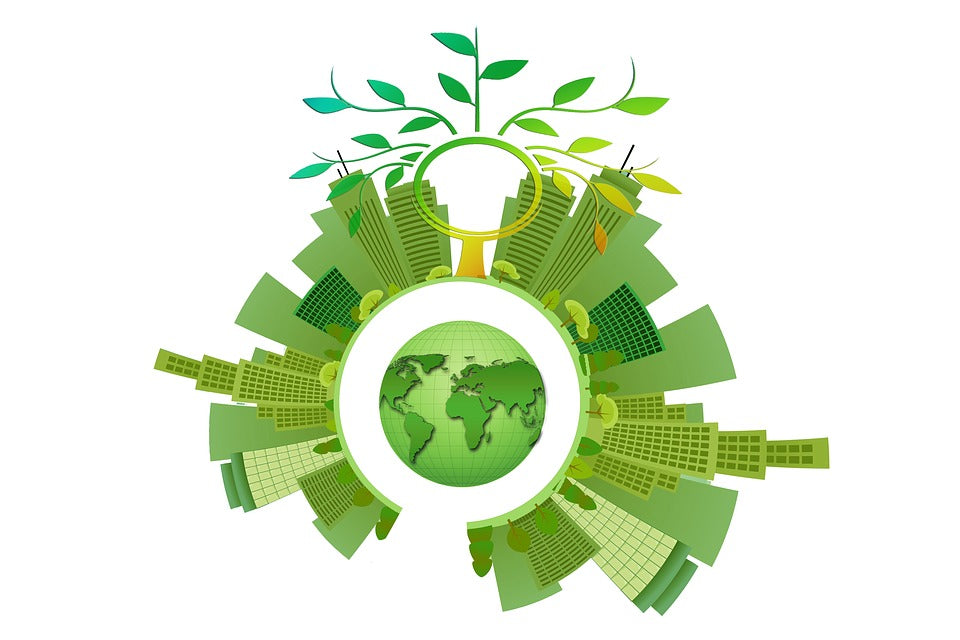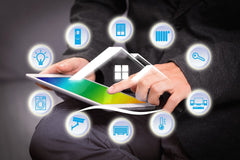Your cart is empty now.

Sustainability at Home
- 18 December, 2021
- Ryan Li
The pandemic changed our lives in many notable ways, one of which is how much time we spend at home. According to the American Time Use Survey, we spent on average 9.71 waking hours per day at home in 2020. That’s a whopping 27% increase compared to 2019.
With this much time, it’s worth looking into ways to improve home sustainability. In this article, we will highlight easy to implement and highly effective changes to your home environment and lifestyle for sustainability at home. These recommendations are not just good for protecting our planet from climate change, but also great for your health, comfort, and savings!
Sustainability at Home
Start with Food

This isn’t about going on a plant-based diet, though there are environmental and health benefits associated with the practice. Rather, it's about cultivating your own food at home - can’t get any more organic or local than that!
The issue with shopping at the grocery store is that those produce travel, on average, 1500 miles to get to you. Moreover, due to our high standards for freshness, transporting and refrigerating vegetables and fruits are often high in energy and carbon intensity. Environmentally, it is far better to grow locally.
The good news is that you don’t need acres of land to get started. Just your backyard, some simple gardening tools, and seeds. In fact, you don’t even need to garden outside. A small container that fits on a windowsill, some potting mix, and a few indoor selections (i.e., basil, garlic, and scallions, etc.) and you are all set.
Along with savings on the grocery bill and better taste, chances are you will also get a good sweat out of gardening. If there’s surplus, share with neighbors. It can be quite therapeutic and community building to grow your own food.
Watch the Drips

According to the EPA, 1 trillion gallons of water are wasted every year due to leaks in the home. Sadly, that’s enough to fill more than 1.5 million Olympic swimming pools.
The first step is to ascertain if there is a leak, which can be visible or audible at faucets, toilets, shower heads, and pipe connectors. What’s perhaps often overlooked is the outdoor garden hose and spigots. Those tend to be more vulnerable from wear and weather.
On the other hand, leaks can also be hidden. In this case, take a look at the water meter - if the number moves up two hours after no water use, there is a problem. Check for the usual spots in the kitchen, bathroom, and laundry room for pooling water or drip marks. Also inspect water heaters inside utility rooms. If you find moisture or mold build up on walls, ceilings, and floors, then contact a plumber as soon as possible. Here is a handy checklist by the EPA as you inspect the home.
While leaks can happen anytime in a year, it is more common in winter. When temperatures drop, water freezes and expands. This causes pipes to burst and gaskets to be displaced. Be sure to inspect for leaks at least once this winter.
Unplug Electronics

Many home devices still consume energy after you’ve turned them “off” (i.e., phantom load). This is because they are still standing by, waiting for your infrared, wifi, voice, or bluetooth signal to turn back on. Consider printers, for example. They would idle 364 days a year for a 30-second print job. Aggregating many devices and long periods of time, phantom load contributes to 5% of your carbon emissions and 10% of your electricity bill every year.
Our recommendation here is to unplug electronics when not in use and plug back in when you need them. Sounds troublesome right! What if the power outlet does that for you? One of the newest developments in energy and carbon saving technologies is the Teak Smart Power Cube from ReVert Technologies.
Technically, the Teak Smart Power Cube has six smart outlets and is not a single plug. However, you don’t have to keep the cube intact and use it as a power hub in one central location. It is modular, so you can take it apart and plug the outlets throughout your home. In any case, plug in all the electronics and Teak’s artificial intelligence will manage power delivery to the devices for you - with your permission of course but simple as that. It's the best smart plug for sustainability at home.
Making the Home More Sustainable
Shed a few pounds of carbon footprint, fix one or two leaks, and save a few dollars here and there. Small changes can produce big results. That’s the ReVerter’s spirit.
ReVert Tech is dedicated to eco-friendly products that add zero waste to the environment. We also believe in transparency. You can read about the Teak Smart Power Cube here. Please get in touch with further questions.
You May Also Like:
10 Simple Ways To Reduce Your Carbon Footprint
Sources:
OneGreenPlant, EPA
Search
Archive
- January 2022
- November 2021



